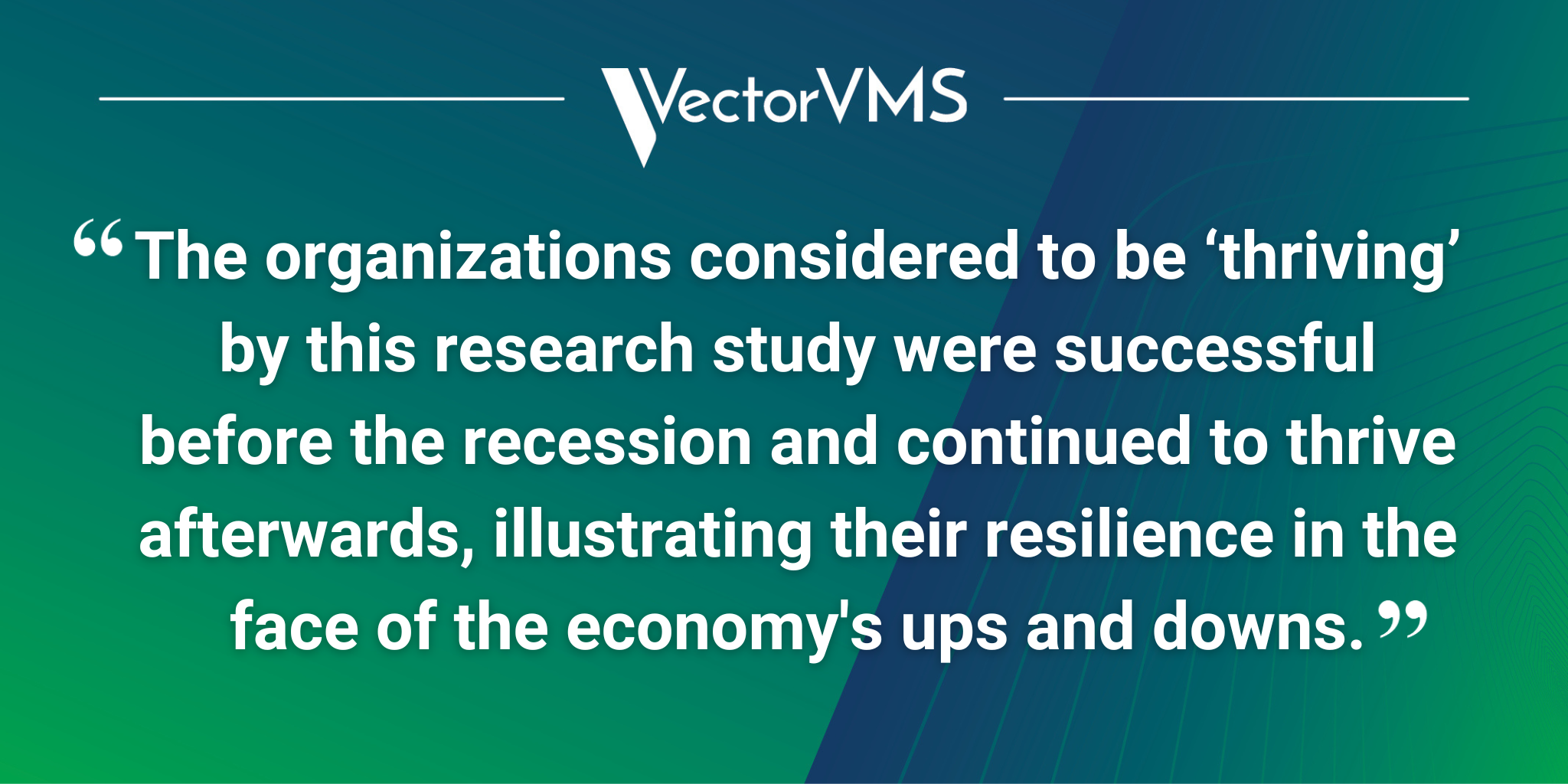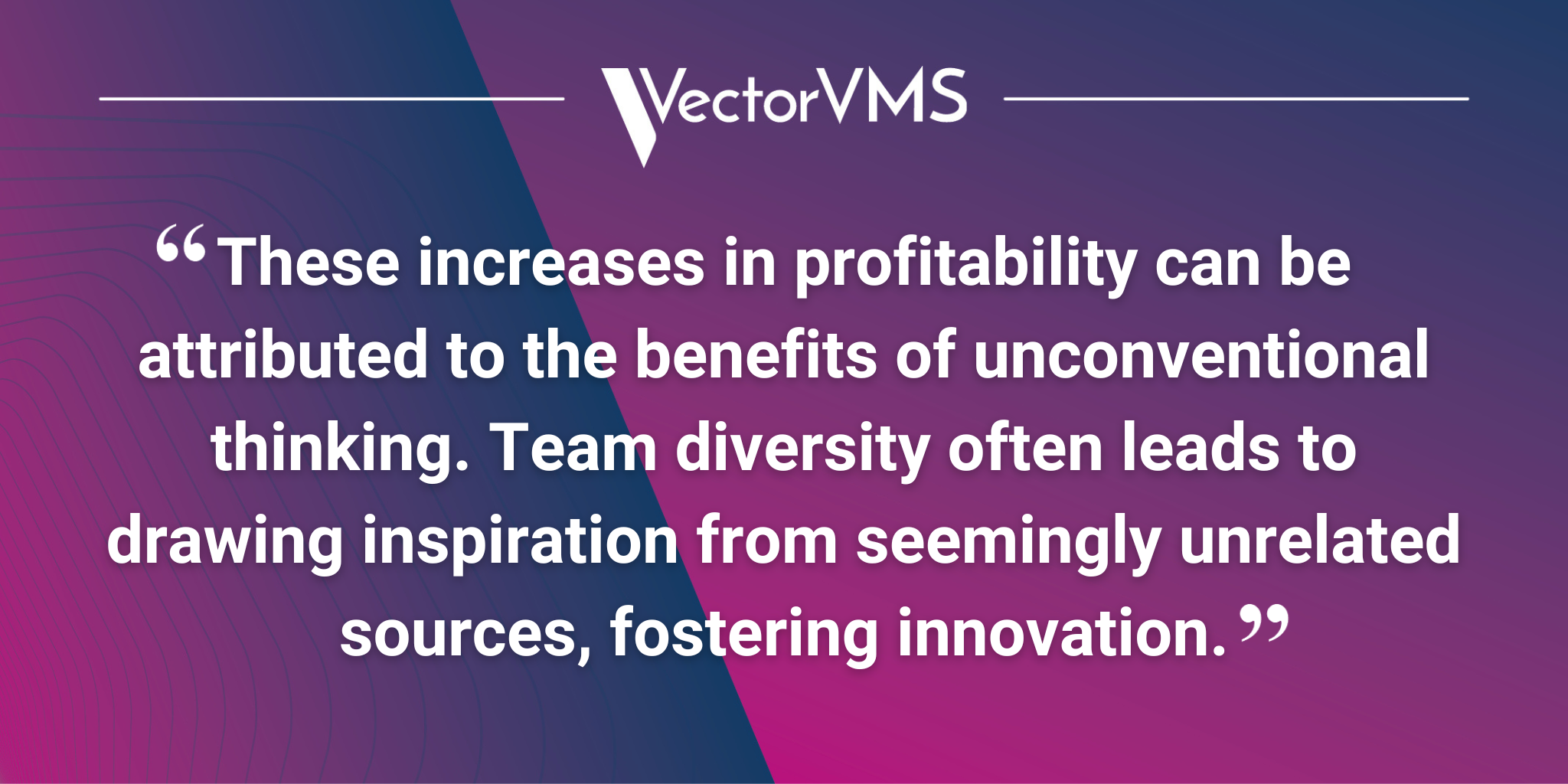As part of the contingent workforce management industry, we’re acutely aware of differing opinions on the possibility of an economic recession in the upcoming year. Still, according to the Federal Reserve Bank of New York, 84% of CEOs are already preparing for one.
When economic growth slows, the hiring of contingent workers typically increases, due in part to the greater flexibility that contract workers offer. However, in the realm of diversity, equity, and inclusion (DE&I), we often witness the opposite trend. In downturns, DE&I initiatives risk being cut, as they’re sometimes considered separate from profitability. If we add these elements to the fact that many of these DE&I initiatives haven’t been extended to contingent workers, it’s clear that an opportunity presents itself.
Expanding DE&I initiatives to encompass your entire workforce—which includes contingent workers—can not only ensure the continuity of your diversity efforts but also enhance your company’s performance during economic downturns.
Read on as we offer two compelling reasons to support this claim.

1) DE&I Fosters Recession Resilience
Every new threat of recession inevitably has many of us recalling the Great Recession of 2008. What may surprise you, however, is that diverse businesses actually performed better during this now infamous period. Research from the Great Place To Work® Institute showed that the 69 diverse companies on the S&P 500 identified as “thriving” reported a 14.4% increase in their stock during 2008 and a 35% gain by 2014. This contrasts starkly with the S&P index itself, which experienced a 35.5% stock decline in 2008 and an overall 9% gain by 2014.
The organizations considered to be “thriving” by this research study were successful before the recession and continued to thrive afterwards, illustrating their resilience in the face of the economy’s ups and downs. What was particularly crucial about these organizations is that they didn’t wait until the recession was in effect to act. They proactively planned and began investing in creating a more inclusive workforce. Thanks to this approach, they remained a resilient organization in economically turbulent times.
But how does this work? One hypothesis suggests that marginalized groups are often more likely to have experience serving customers directly and are thus better attuned to the actual state of the business. Ironically, these very groups are often overlooked when it comes to generating ideas and providing feedback. Conversely, by fostering a culture that embraces the views of everyone, you become more attuned to the feedback your business receives. This, in turn, enhances your ability to generate ideas more likely to benefit the company.
MORE FROM THE BLOG | ‘3 Strategies for Maintaining Healthy Finances with Vendors in a Contingent Workforce Program’

2) DE&I Can Lead to Higher Profitability
Human resources teams aren’t always seen as directly linked to a definitive return on investment. However, when the role of talent acquisition in recruiting and retaining a more diverse workforce leads to increased innovation and higher profits, HR suddenly transforms into a profit center.
A 2020 research report by McKinsey revealed that companies in the top quartile for gender diversity on executive teams were 25% more likely to achieve above-average profitability than those in the fourth quartile. The impact of ethnic and cultural diversity was even more substantial, with top-quartile companies outperforming those in the fourth quartile by 36% in terms of profitability.
Another 2020 research project looked beyond simple representation statistics to consider gaps in fairness and levels of responsibility. It found that year-over-year revenue growth is stronger in businesses where the disparity in treatment between white employees and minorities is smallest. The 100 companies with the smallest gaps experienced 11.1% growth—the 100 companies with the largest gaps averaged just 8.6% growth.
These increases in profitability can be attributed to the benefits of unconventional thinking. Team diversity often leads to drawing inspiration from seemingly unrelated sources, fostering innovation. Innovation keeps businesses ahead of the competition, enabling them to venture into new industries and markets, ultimately leading to increased profits.
YOU MIGHT ALSO LIKE | ‘Direct Sourcing: A Cost-Saving Strategy to Improve Finances in a Contingent Workforce Program’
Don’t Wait Until a Recession Hits
With the data on your side, it becomes easier to capture the attention of your procurement, executive, and C-level teams to promote the implementation of DE&I within your workforce—both full-time and contingent. And if you already have a DE&I program in place, the time has come to extend it to include your contingent workforce. Plan ahead and start investing now in building a more inclusive workforce to establish a more resilient organization!
Discover the transformative potential of DE&I for your organization by downloading our ebook ‘3 Ways DE&I Initiatives Enhance Your Total Talent Workforce’. Alternatively, VectorVMS is here to help—reach out to connect with a VMS partner committed to supporting your contingent workforce diversity and inclusion efforts!
 Meet the Expert
Meet the Expert
Irene Koulianos – Program Manager
Irene Koulianos brings a decade of experience in contingent labor staffing and recruitment to her role as Program Manager. She helps new and existing clients to develop best-fit vendor management solutions for their contingent labor programs. This includes product demonstrations, completing bids, and supporting the product team with roadmap initiatives. In addition to this primary role, she is passionate about building eLearning solutions for clients, partners, and internal VectorVMS staff leveraging Learning Technologies Group products. Prior to joining VectorVMS, Irene worked for large international staffing organizations as well as smaller boutique IT recruitment firms. She has a deep understanding of the contingent workforce landscape which helps her create meaningful solutions for her clients. Connect with her on LinkedIn.



